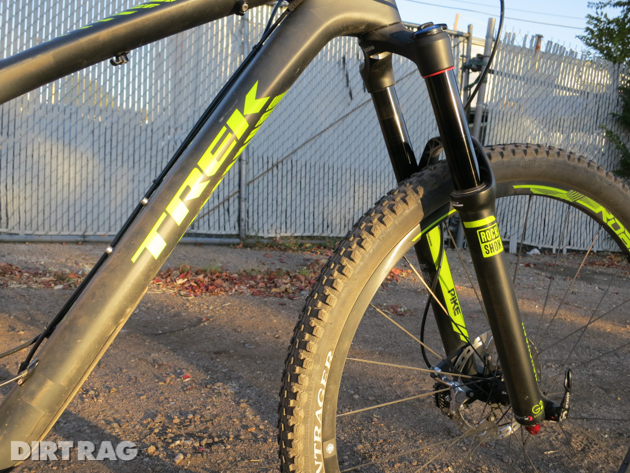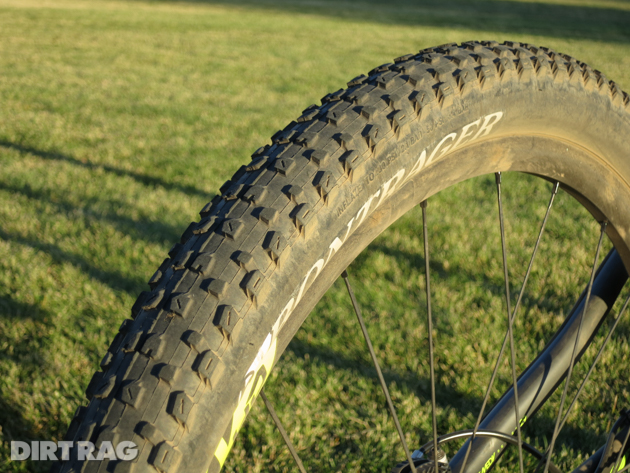First Impressions: Trek Remedy 9.9 29
Originally posted on November 4, 2014 at 13:43 pmIt seems like a long while since I’ve been on a Trek. In the couple years that have passed since I last rode one, we now see some of its once proprietary geometry principles implemented by other manufacturers, such as the increased offset fork on 29ers.
‘So what’s new,’ I had to ask as I began assembling my latest test bike. The answer is a lot.
Trek’s Remedy 9.9 29 trail bike is chock full of features. The mainstays are all there. OCLV Carbon, G2 geometry, ABP braking, a tapered headtube and Trek’s EVO Link all get the nod. There are some well placed frame guards, color matched this and that and internal routings. My well-appointed XL weighs in at 27.12 pounds as shown, with pedals.
But the big story is the new RE:activ damper that’s been developed with the F1 suspension experts at Penske with Fox’s DRCV shock. We described it this way earlier this year with our coverage of the new Fuel EX:
“The idea behind regressive damping is a firm low speed platform for support while pedaling, with a high speed circuit that substantially reduces compression damping and then slowly ramps it back up to gain control of the suspension again, and help prevent bottoming. Trek has been calling this “the nose” as the graphs below illustrate why that name is fitting.”

Trek is also adding to the arms race by introducing a new Boost148 rear hub. The slightly wider 148mm hub allows for wider bracing angle of the spokes leading to what Trek says is a 15 percent stiffer wheel. This standard is only used on Trek’s 29ers, and claims to bring the stiffness of a 29-inch wheel on par with a 142mm 27.5 wheel. Unlike some of its earlier proprietary designs, Boost148 is an open standard design and has companies like DT Swiss, Shimano and Raceface on board.
As for my first impressions? I may have drank that 27.5 Kool-Aid too soon….
The RE:active shock seems to cut the top off of pumps and always feels like it’s riding at the sag point. I’ve been trying to get other forks to perform like this for years and it’s great to have a rear end that matches how I want my fork to feel. I’ve enjoyed how the bike feels like it’s skipping through rough sections rather than diving in. Regardless of the size of the bumps it feels consistent and smooth with great traction.
After a few initial rides, this bike has me thinking about a possible change up to my personal stable. Trek might need to be nervous about ever seeing it again.
RockShox Pike. Never a bad choice, and made better with a 51mm offset for the big wheels.
Bontrager tires have been improving greatly in the last few years. No need to swap these XR treads for something else. They work well everywhere.
Reverb remotes and Shimano brakes are an awkward fit when combined this way. Since this bike has a 1x drivetrain, why not run the dropper remote under bar where the shifter would be? Unfortunately, this left hand Reverb remote would need to be swapped for the right hand model to work properly under the bars on the left side.





